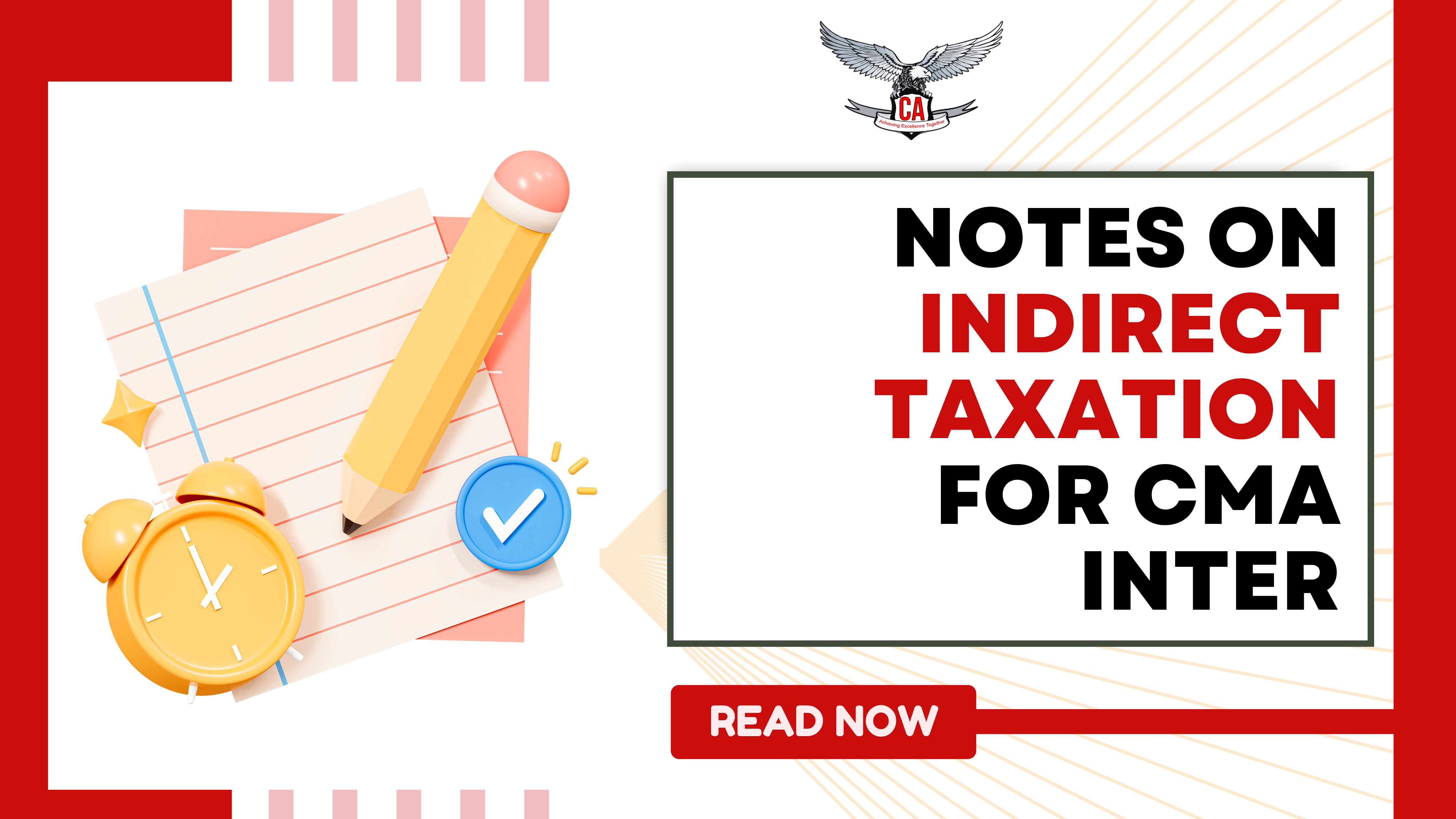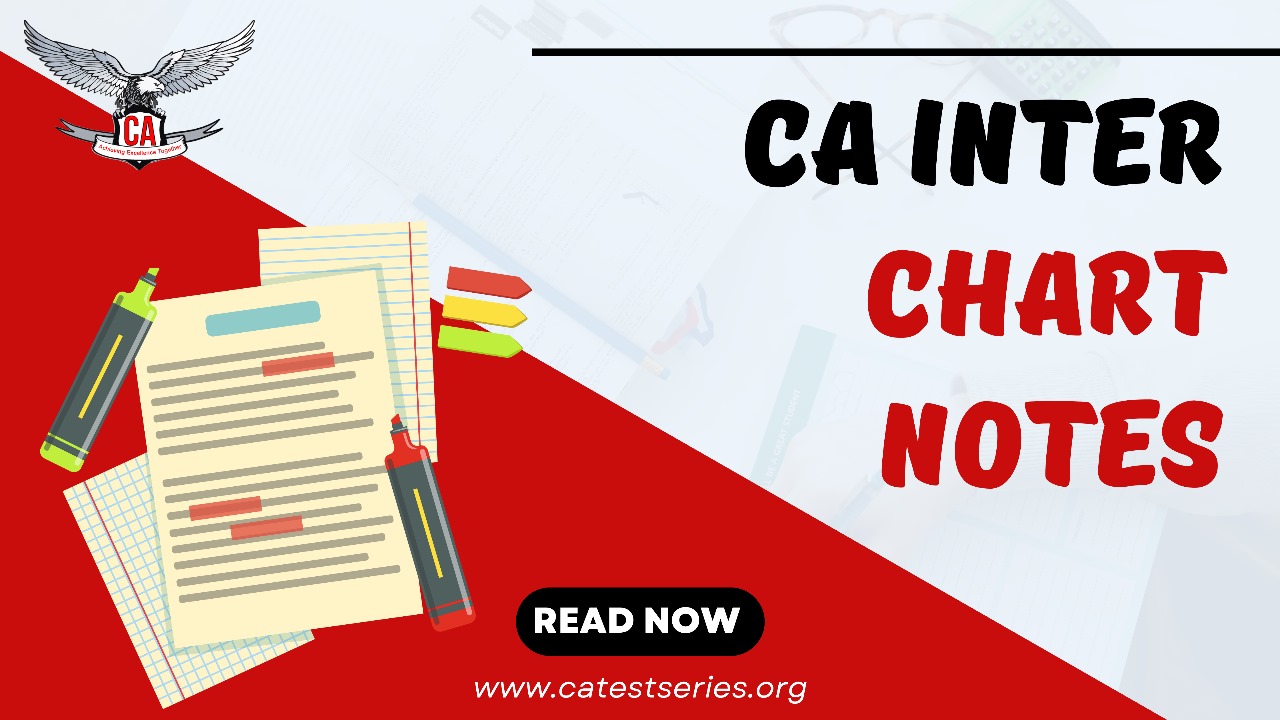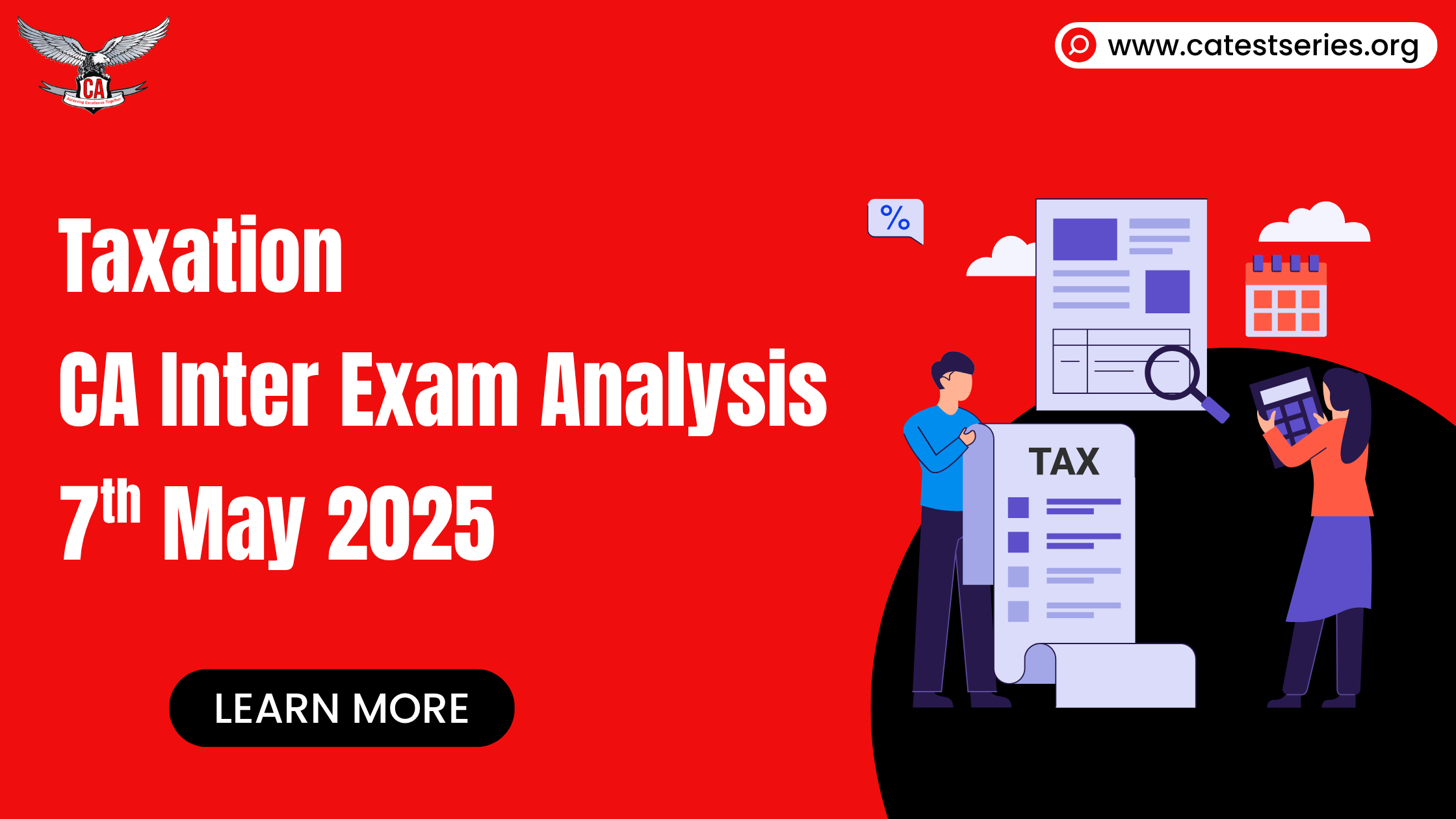CMA Inter Indirect Tax Notes for ICMAI 2025 Exams | Download Important Practice Questions
Notes on Indirect Taxation for CMA Inter
Picture it as if you are at a grocery shop to buy a chocolate pack. Its price tag reads ₹50, but it costs you ₹55. The additional ₹5 is not for the shop. Instead, it includes tax already levied on the product, which the shopkeeper will remit to the said government. You do not remit this amount to the government yourself, nor does it relate to your earnings. This is an Indirect Tax at work.
Indirect tax is one such tax that is not directly imposed on consumers but on goods and services, whose ultimate burden is to be borne by the end user. The broad category of indirect taxes includes all taxes except income taxes; unlike direct taxes, which depend upon an individual capacity and thus are personally based, indirect taxes are coercive in nature, depend on transactions, and are included in the prices we pay for various commodities and services.
Indirect taxes are economically significant in that they include many things. We can find them in daily routine items like food or petrol, so they become a dependable source of income for the state and an efficient means of controlling the level of consumption within the economy. The fiscal Measures from the government aimed at recuperating the internal -consumption tax and providing Local governments with firefighting tools to influence the local markets, amongst other (Indirect) taxes, are directed to them.
Major Indirect taxes
- Goods and Services Tax (GST):
GST, the Goods and Services Tax, is a broad-based, multi-stage, destination-based taxation, imposed on every value addition. The earlier pattern of indirect taxes like selling tax, service tax and excise duties to mention but a few have been replaced by this continuous line of taxation.
The Elements of GST
- CGST (Central GST): In case the goods are sold or services supplied between two states, CGST will be charged on the net sales value of such goods or services. This helps generate national revenue for the care of administration and builds up the country infrastructure.
- SGST (State GST): At the same time, the state in which the transaction takes place will also impose an SGST on the sale. The revenue collected will be utilized to fund services given by the state, such as health care and education.
- IGST (Integrated GST): In the case of sales made from one state to a buyer in another· state, the unit selling price would be subjected to a singular operation called IGST levied on a combination of two taxes, CGST and SGST. IGST is levied by the centre, and out of which, a part is apportioned among the states to which the revenue collection relates to maintaining fiscal equilibrium between the states.
- Multi Slab Tax Structure -While Multi Slab rates and structure are also adopted in the GST in India. The primary purpose of it is different in this case as the tax rates are not really exorbitant for the buyers. The salient slabs are as follows: 5%, which consists of essential products like foodstuff. 12% and 28% are creditable taxes on standard goods and services like processed foods and electronics for consumers.
Compliance Essentials in GST: Key Practices and Procedures
GST Registration: All businesses that reach a certain level of turnover need to register for GST (₹20 lakh for services and ₹40 lakh for goods except otherwise specified). All interstate businesses need to register for GST, irrespective of their turnover, to ensure that they pay taxes for revenue generated in another state.
- Invoicing and E-Way Bill: Under GST, all businesses are required to obtain and format invoices, whereas a Tax Invoice with a specific value is enclosed in the purchase order. In the case of goods above a certain value in one invoice, a goods movement between states through different tax jurisdictions requires an E-way bill. This allows the government to track the movement of commercial goods and prevent the loss of tax collection. This has lessened the burden of paperwork and has enhanced the speed of transportation.
- Input Tax Credit (ITC): One of the more favourable aspects of any GST is the input Tax Credit (ITC), which enables the business to take credit for the GST incurred on inputs used in the manufacture of goods. Under ITC, there is no issue of “double taxation”, as was the case prior to goods and services tax law (GST), whereby taxes were chargeable at every level of production; therefore, there was a tax on tax.
2) Customs Duties: Customs duty is levied on general cargo entering or leaving India. There are several types of such duties such as basic customs duty, anti- dumping duty, or countervailing duties. By imposing such tariffs, the custom duty assists the local companies from incursion from foreign players by denying access to cheap foreign goods.
3) Excise Duty: Excise duty was always collected at the production level on manufactured goods. With GST, excise duty is now only collected on a few items, such as petroleum and alcohol, which are still not under the GST bracket. It brings in substantial revenues to the government on high-demand items like fuel.
4) Stamp Duty: Stamp duty is levied on documents such as property transactions, bonds, or agreements. It is collected by the state governments and, at times, compulsory for the documents to be effective in court. It is not a direct tax but an indirect tax that consumers pay if they intend to go into certain deals.
Challenges in the Indirect Tax System
1. Complexity in Compliance: GST is simple, but compliance is not and still remains mainly for SMEs due to frequent filings and digital requirements.
2. Rule Changes: GST rates and rules are very frequent, and businesses get afraid, so it is tough to think about tax planning.
3. Slow ITC- The main reasons for delays in ITC claims are the vendors that do not match, are unfulfilled, and affect the cash flow.
4. System Glitches: The GST portal is slow and in the peak hours, which results in delayed and frustrating results.
Benefits of the Indirect Tax System
1. Unifies tax structure under one roof: GST would combine multiple taxes into just one, and this itself would make the compliance mechanism much simpler for businesses.
2. Cascading effect reduces: ITC prevents double taxation, reduces the burden of taxes imposed on businesses and consumers respectively.
3. Formalize the formal economy: Digital Compliance is compulsorily enforced in the GST system; it naturally forces businesses to formalize and then, after gaining transparency, reduces the quantum of tax evasion.
4. Stable source of income- Indirect taxes form a stable source of income for government projects and welfare schemes, thus developing the economy.
Recent Changes in Indirect Taxation
Some of the recent indirect taxation developments include e-invoicing to all business turnover above ₹5 crore, increased penalties for delay in GST filing, and adjusted tax rates on specific goods to balance the needs of revenue. Other clarification of ITC guidelines shall also help in simplifying claims, thereby providing further support to transparency and easier compliance across sectors.












